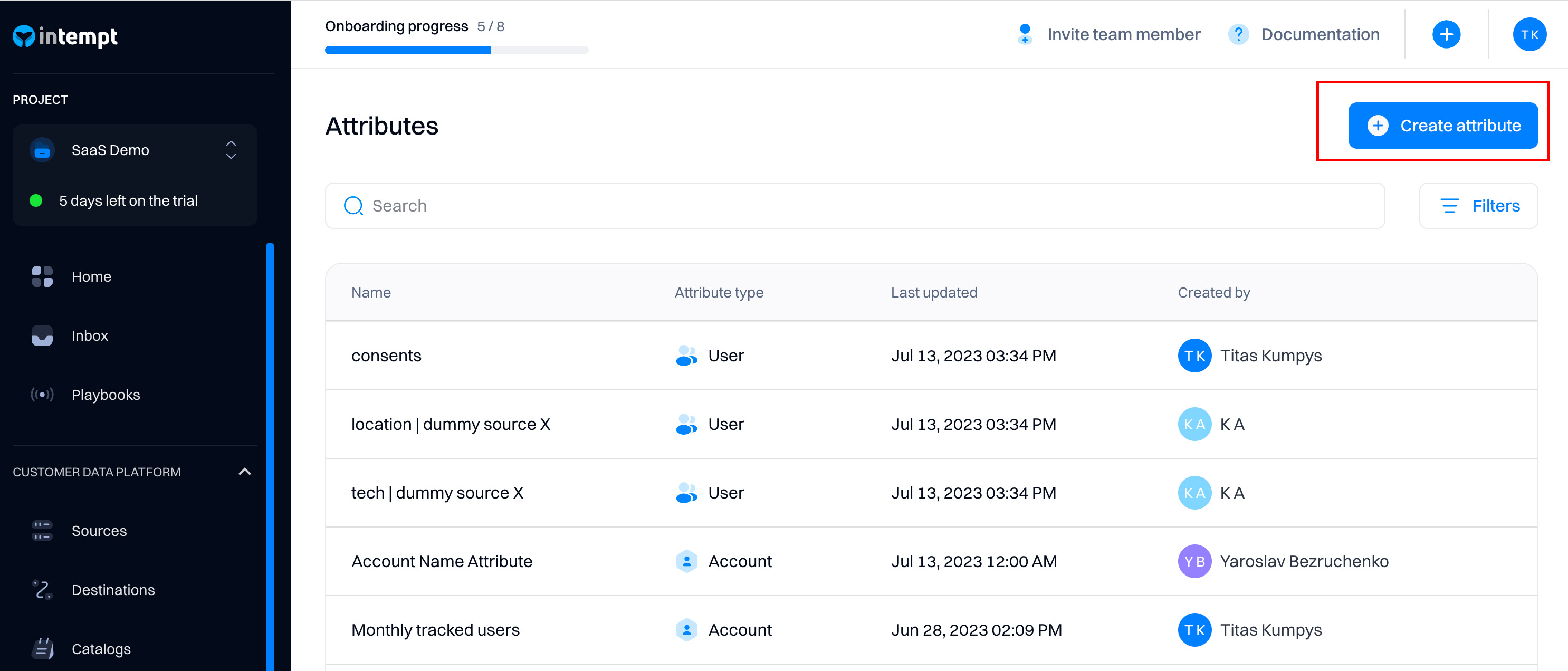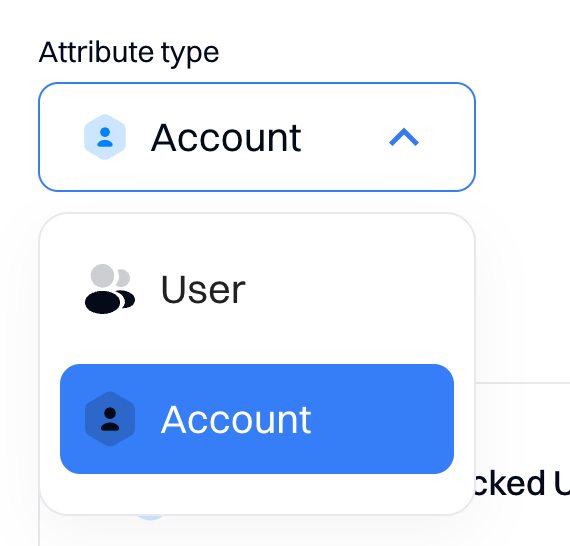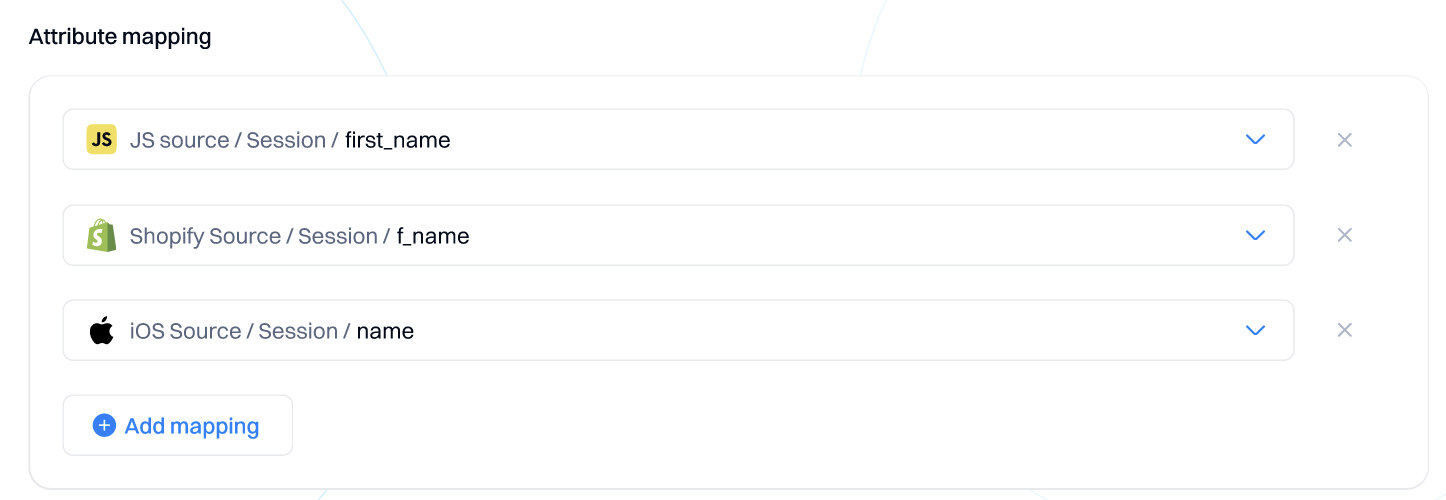Creating attributes
Creation flow
Go to Attributes and click "Create attribute".

Choose the attribute type:
- Users (if you are creating user-level property)
- Accounts (if you are creating company-level property)

Merge strategy
You can define rules on how attributes should be updated once the user is identified (his profiles are merged) or new data is pushed to the attribute (for example, user attribute location changed from United States to United Kingdom):
- Most frequently used value - the value of the property that was used the most times
- First stored value - if both user profiles have a value, the oldest value (with the oldest timestamp) is used for the attribute
- Most recent value - keeps the value that was the last set

The main idea of the merge strategy is to allow you to define a logic of which property should be prioritized when a new data item is received.
Most frequently used value. Consider this example for email address - user submitted [email protected] 6 times and [email protected] 2 times. Intempt will use the email address that was used most frequently [email protected] (user might use multiple emails to sign up).
First stored value. Important in cases when you want to track the user's first option, relevant in cases when you track the user's original location.
Most recent value. We recommend using this option most frequently as it represents the most up-to-date user's or account information. Any data item that was submitted most recently will be used as an attribute value for this merge strategy.
Attribute mapping
Attribute mapping allows you to select one or more properties across multiple data sources and use it to create a unified record of a user or account trait. Imagine a situation when you have different user names in your iOS app, JS source, and Shopify. Which one to prioritize? Select the properties via attribute mapping and we will create a unified attribute record based on your chosen merge strategy.

Updated 3 months ago